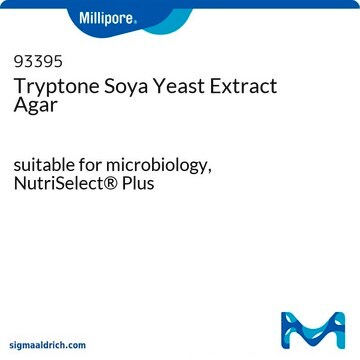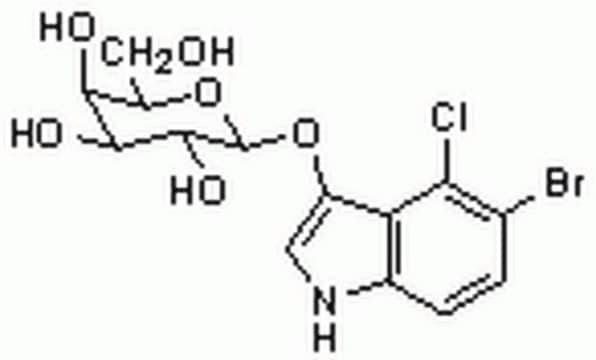83650
L-Rhamnose monohydrate
≥99.0%, suitable for microbiology, Naturally occurring deoxy sugar that is found primarily in plants and some bacteria
Synonim(y):
6-Deoxy-L-mannose monohydrate, L(+)Rhamnopyranose, 6-Deoxy-L-mannose, L(+)Rhamnopyranose
About This Item
Polecane produkty
Poziom jakości
Próba
≥99.0% (HPLC)
≥99.0%
Postać
powder
aktywność optyczna
[α]20/D +8±0.5°, 2 hr, c = 5% in H2O
pozostałość po prażeniu
≤0.1% (as SO4)
mp
90-95 °C
rozpuszczalność
H2O: 0.1 g/mL, clear, colorless
ślady anionów
chloride (Cl-): ≤50 mg/kg
sulfate (SO42-): ≤50 mg/kg
ślady kationów
As: ≤0.1 mg/kg
Cd: ≤5 mg/kg
Co: ≤5 mg/kg
Cu: ≤5 mg/kg
Fe: ≤5 mg/kg
Ni: ≤5 mg/kg
Pb: ≤5 mg/kg
Zn: ≤5 mg/kg
Zastosowanie
microbiology
temp. przechowywania
10-30°C
ciąg SMILES
O.C[C@@H]1O[C@@H](O)[C@H](O)[C@H](O)[C@H]1O
InChI
1S/C6H12O5.H2O/c1-2-3(7)4(8)5(9)6(10)11-2;/h2-10H,1H3;1H2/t2-,3-,4+,5+,6+;/m0./s1
Klucz InChI
BNRKZHXOBMEUGK-NRBMBCGPSA-N
Szukasz podobnych produktów? Odwiedź Przewodnik dotyczący porównywania produktów
Powiązane kategorie
Opis ogólny
Rhamnose can also be fermented by several microorganisms like E. coli, Enterobacter, Citrobacter, Klebsiella and some species of Salmonella. Acid production from rhamnose is a characteristic phenotype of Listeria monocytogenes. Therefore, rhamnose can be used for differentiation and identification of bacteria, it is used in media like Rhamnose broth or Phenol red Rhamnose broth.
Zastosowanie
L-Rhamnose monohydrate is used in many media formulations such as Rhamnose broth or Phenol red Rhamnose broth to facilitate differentiation of bacteria that can ferment the sugar and those that cannot.
An understanding of the rhamnose-containing polysaccharides present in the cell walls of certain bacteria can enable us to identify biosynthetic pathways that can further be used as potential targets for antibacterial therapy.
Kod klasy składowania
11 - Combustible Solids
Klasa zagrożenia wodnego (WGK)
WGK 3
Temperatura zapłonu (°F)
Not applicable
Temperatura zapłonu (°C)
Not applicable
Środki ochrony indywidualnej
Eyeshields, Gloves, type N95 (US)
Choose from one of the most recent versions:
Masz już ten produkt?
Dokumenty związane z niedawno zakupionymi produktami zostały zamieszczone w Bibliotece dokumentów.
Klienci oglądali również te produkty
Produkty
Culture media provides a habitat with suitable nutrients, energy sources, and certain environmental conditions for the growth of microorganisms. The components of the culture media range from simple sugars to peptones, salts, antibiotics, and complex indicators.
Podłoże hodowlane zapewnia środowisko z odpowiednimi składnikami odżywczymi, źródłami energii i określonymi warunkami środowiskowymi dla wzrostu mikroorganizmów. Składniki podłoża hodowlanego obejmują zarówno cukry proste, jak i peptony, sole, antybiotyki i złożone wskaźniki.
Nasz zespół naukowców ma doświadczenie we wszystkich obszarach badań, w tym w naukach przyrodniczych, materiałoznawstwie, syntezie chemicznej, chromatografii, analityce i wielu innych dziedzinach.
Skontaktuj się z zespołem ds. pomocy technicznej










